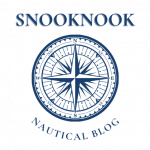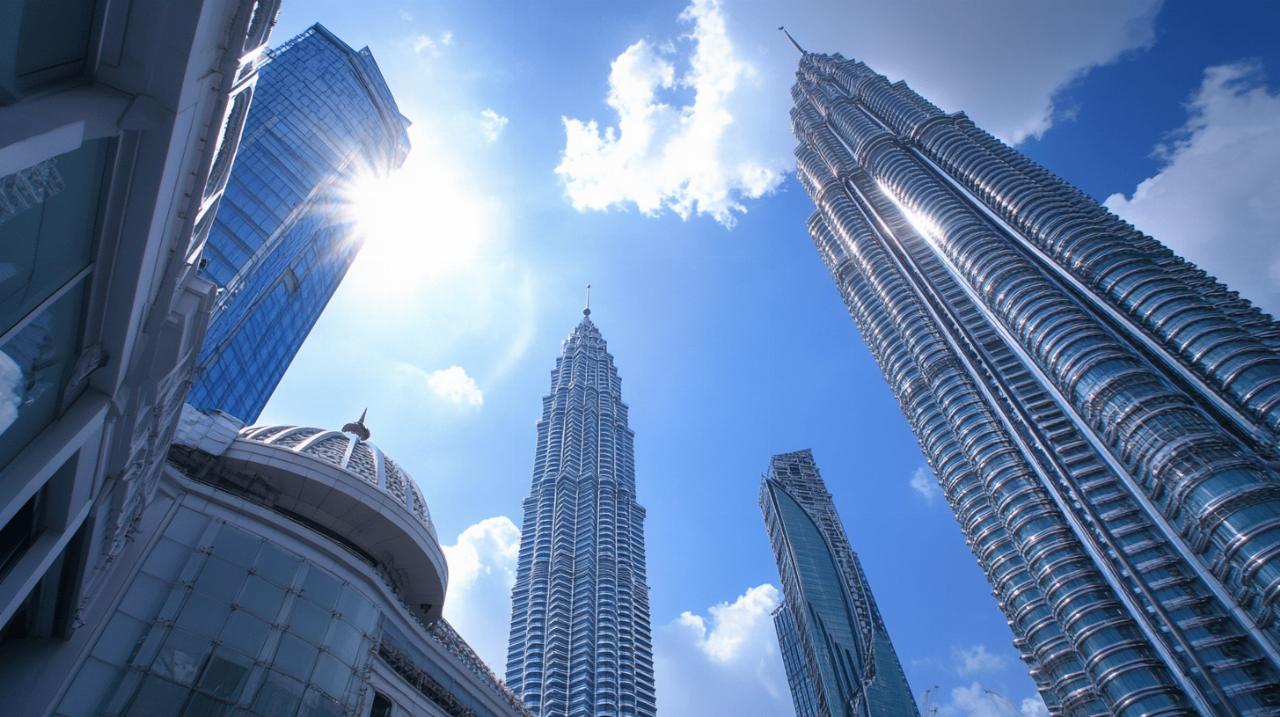Planning a journey involves thoughtful preparation to ensure your travel experience is memorable for all the right reasons. From selecting destinations to managing your funds wisely, organizing your trip in advance can make the difference between a stressful ordeal and an amazing adventure that exceeds expectations.
Early planning strategies
The initial stages of travel preparation set the foundation for your entire journey. Starting early gives you time to research thoroughly, find the best deals, and address any unexpected issues that might arise before departure.
Setting travel goals and timeframes
Begin by determining what you want to experience during your travels. Are you seeking cultural immersion, adventure activities, or simply relaxation? Create a list categorizing your priorities into 'must-do' experiences and 'nice-to-have' options. Many successful travelers use PreparaTuViaje techniques to establish realistic timeframes that account for travel distances and needed rest periods. When selecting dates, consider factors like peak seasons, local festivals, and weather patterns that might impact your experience.
Budget allocation techniques
Financial planning forms the backbone of stress-free travel. Start by calculating major expenses including transportation, accommodation, daily meals, and activities. Research destination costs to develop a realistic daily spending allowance. Set aside a contingency fund (typically 10-15% of your total budget) for unexpected expenses. Track flight prices using tools like Skyscanner before booking. For longer stays, rental properties often provide better value than hotels, especially when you factor in cooking facilities that reduce meal costs. The key is balance – PreparaTuViaje methods suggest allocating funds strategically between essential travel elements and special experiences that make your journey unique.
Destination research essentials
Planning your travels begins with thorough destination research, which can make all the difference between a stressful journey and a seamless adventure. Taking time to investigate your chosen location before departure allows you to create a thoughtful itinerary while leaving room for spontaneous experiences. Proper research helps you budget accurately, pack appropriately, and navigate local customs with confidence.
The foundation of excellent trip preparation involves gathering information about passport requirements (ensuring at least six months validity beyond your trip duration), visa necessities, and recommended vaccinations. Many experienced travelers consult travel clinics 6-8 weeks before departure to ensure they have all required health precautions in place.
When selecting your base location, consider criteria such as accessibility via public transport or car, proximity to amenities like cafes and pharmacies, and whether it suits your specific travel style. Hotels work well for short stays of 1-3 nights, while rental properties offer advantages for longer visits, including cooking facilities and dedicated workspaces.
Cultural insights and local customs
Understanding the cultural landscape of your destination enriches your travel experience immeasurably. Beyond standard tourist attractions, researching local customs demonstrates respect and helps you integrate more meaningfully with the community. This knowledge prevents unintentional cultural missteps and opens doors to authentic experiences.
Rather than relying solely on guidebooks or tourist office recommendations, which can provide generic information, seek out local publications, event calendars, and travel blogs for insider knowledge. These resources often reveal hidden gems and community gatherings that typical tourist materials might overlook. For midlife travelers and those interested in slow travel, this cultural immersion becomes particularly valuable as it aligns with the philosophy of reducing mobility while deepening connections.
Learning basic phrases in the local language shows respect and facilitates interactions. Make copies of important documents and inform your bank about travel plans to avoid financial complications. When exploring restaurants and local businesses, recognize that platforms like Yelp and TripAdvisor may not be as reliable outside the US—local recommendations often lead to more authentic dining experiences.
Weather patterns and best visiting seasons
Strategic timing can significantly impact your travel experience. Researching weather patterns helps you select the ideal season for your visit based on your preferences and planned activities. Some destinations have distinct high and low seasons that affect not only climate but also crowd levels, accommodation availability, and pricing.
Planning around seasonal considerations allows for efficient packing—bringing appropriate clothing and gear without overpacking. Consider creating categories for your packing list: essential items, weather-specific gear, and destination-appropriate attire. Compression bags can maximize luggage space while keeping belongings organized.
Budget-conscious travelers benefit from identifying shoulder seasons—periods just before or after peak tourist times—when weather remains favorable but prices and crowds diminish. This approach works particularly well for long-term slow travel, which has gained popularity among travelers over 50 and 60 years old. In 2023 alone, an estimated 4.82 million more older British travelers planned extended travel periods, demonstrating the growing trend toward meaningful, season-aware travel planning.
For work-from-anywhere travelers, understanding weather patterns helps schedule outdoor activities during ideal conditions while reserving rainy or extreme weather days for indoor work. This flexible approach maximizes enjoyment while maintaining productivity, allowing you to pace activities throughout your journey rather than cramming too much into each day.
Creating effective itineraries
Crafting the perfect travel itinerary strikes a delicate balance between thorough preparation and allowing room for spontaneity. A well-planned itinerary serves as your roadmap while traveling, helping you maximize your experience without feeling rushed or overwhelmed. Many seasoned travelers organize their plans using a priority system—categorizing activities as 'must-do,' 'nice-to-do,' and 'if there's time' items to ensure they don't miss key experiences while maintaining flexibility.
Balancing activities and rest time
The art of creating a satisfying travel experience lies in thoughtful pacing. Resist the temptation to overpack your schedule with activities. Experts recommend planning for dedicated downtime—periods where you can simply relax and absorb the atmosphere of your destination. This slow travel approach allows for deeper connection with local culture and prevents the exhaustion that often comes from rushing between attractions. Budget approximately two hours per day for enjoying a proper meal at a local establishment, and limit yourself to one museum per day to avoid information overload. This measured approach helps maintain energy levels throughout your journey and creates space for unexpected discoveries that often become trip highlights.
Digital tools for itinerary management
Modern technology offers numerous solutions for organizing your travel plans efficiently. Travel planning apps can store reservation details, suggest activities based on your location, and provide real-time updates for transportation. While researching your destination, look beyond mainstream review sites like Yelp or TripAdvisor, especially when traveling outside the US. Local publications, event calendars, and specialized travel blogs typically offer more authentic recommendations. For work-from-anywhere travelers, digital tools become even more essential for balancing professional obligations with exploration—restricting tourism activities to weekends and select half-days during the workweek. Many apps allow for collaborative itinerary creation, perfect for group travel where preferences need to be consolidated into a cohesive plan that accommodates everyone's priorities while maintaining a realistic schedule.
Smart packing approaches
Packing efficiently stands as a cornerstone of successful travel planning. When preparing for your journey, adopting smart packing strategies can significantly enhance your travel experience by reducing stress and increasing convenience. The right packing approach ensures you have everything you need without the burden of excessive luggage.
Versatile clothing selection
Selecting the right clothing items forms the foundation of efficient packing. Choose pieces that can be mixed and matched to create multiple outfits, reducing the total quantity needed. Opt for wrinkle-resistant fabrics that travel well and require minimal maintenance. Consider layering options that work across different weather conditions, especially for trips spanning multiple climate zones. When selecting your travel wardrobe, neutral colors provide maximum versatility, allowing you to create numerous combinations from fewer items. Packing light doesn't mean sacrificing style – instead, focus on quality basics that can be accessorized differently throughout your trip. For long-term travelers, compression bags can maximize space while keeping clothing organized and accessible.
Electronics and accessories organization
Managing your tech gear requires thoughtful organization to ensure functionality throughout your journey. Start by creating a dedicated space in your luggage for electronics and their accessories. Use cable organizers or small pouches to prevent tangled cords and misplaced chargers. A travel adapter suitable for your destination countries is essential – research plug types needed before departure. For security reasons, keep valuable electronics in your carry-on luggage rather than checked bags. Consider bringing solar-powered chargers for extended trips or remote destinations where power access might be limited. Backing up important documents and information before travel provides peace of mind, while using a VPN protects your data security when connecting to public networks. Minimize your electronic footprint by evaluating which devices are truly necessary – many travelers find a smartphone can replace several separate gadgets.
Travel protection measures
Preparing for your journey requires careful consideration of protective measures that safeguard both you and your trip investment. When planning travel in advance, protection should be a top priority for ensuring a smooth experience regardless of unexpected circumstances. Proactive security planning creates peace of mind, allowing you to fully enjoy your destination rather than worry about potential issues.
Midlife travelers and those embarking on long-term travel particularly benefit from comprehensive protection strategies. Whether you're planning a work-from-anywhere adventure or seeking local experiences in distant locations, having robust safety nets in place is essential. Trip preparation should include both financial protection and document security as fundamental components of your travel checklist.
Insurance coverage options
Travel insurance represents a critical aspect of trip preparation that many travelers overlook. Several reputable providers offer specialized coverage, with World Nomads and SafetyWing standing out as popular choices among experienced travelers. When selecting a policy, consider options that include medical emergencies, trip cancellation, baggage loss, and evacuation services.
The type of coverage needed varies based on destination selection, trip duration, and planned activities. For those engaging in slow travel or extended stays, look for policies that offer renewable coverage and fewer restrictions on trip length. Medical coverage should accommodate pre-existing conditions and provide sufficient limits for your destination. Trip cancellation protection becomes especially valuable for trips with significant upfront costs for transportation and accommodation booking.
Many credit cards offer basic travel protection, but these rarely provide comprehensive coverage. Dedicated travel insurance offers more substantial benefits, particularly for international travel where healthcare costs can be substantial. Budget approximately 4-8% of your total trip cost for quality insurance coverage – a modest investment compared to potential financial losses from unexpected events.
Document safeguarding practices
Securing vital travel documents begins before departure with creating both digital and physical copies. Scan your passport, visa, insurance policy, itinerary, and identification cards. Store digital copies in secure cloud storage accessible from anywhere while keeping physical copies separate from originals during travel. Some travelers use encrypted password managers to store sensitive information.
Passport requirements deserve special attention, as many countries mandate at least six months validity beyond your planned departure date. Check expiration dates well in advance of booking, as renewal can take several weeks. For visa requirements, research thoroughly based on your specific nationality and destination plans.
When traveling, utilize secure storage options for original documents. Many accommodations offer in-room safes or secure storage at reception. Consider using hidden security belts or specialized document holders that protect against theft and electronic scanning. A portable document safe can provide additional security in lodgings without built-in options.
Travel safety extends to digital information as well. Using a VPN service protects your data when connecting to public networks. Password-protect all devices and enable remote tracking features. Inform your bank and phone company of travel plans to prevent service interruptions due to suspected fraud alerts. These document safeguarding practices form a crucial foundation for trouble-free travel.
Pre-departure notifications
Properly notifying relevant institutions before your departure is a crucial step in travel planning that many travelers overlook. Taking time to make these notifications can prevent unnecessary complications during your journey and ensure smooth access to essential services while abroad.
Financial institution alerts
Notifying your banks and credit card companies about your travel plans is essential to avoid payment disruptions. Many financial institutions have security systems that flag transactions from unusual locations as potential fraud, which could result in your cards being blocked while traveling. Contact all banks and credit card providers at least one week before departure with your travel dates and destinations. Consider applying for travel-friendly credit/debit cards that offer benefits like no foreign transaction fees. Setting up mobile banking apps and enabling travel notifications through online portals can streamline this process. Some travelers also find it helpful to sign up for banking loyalty programs that offer travel perks or rewards for international spending.
Mobile service preparations
Your mobile phone is a vital travel tool, so proper preparation is key. Contact your mobile service provider to understand international roaming options and associated costs. Many carriers offer temporary international plans that can be more economical than standard roaming rates. Alternatively, research local SIM card options at your destination for potentially more affordable data and calling capabilities. Downloading offline maps, translation apps, and travel guides before departure ensures access to essential information regardless of connectivity. For long-term travelers, consider unlocking your phone to accommodate foreign SIM cards or investing in an eSIM solution. Backing up your device before traveling and setting up secure cloud access to important documents provides an extra layer of security for your digital information while abroad.
Communication preparation
When planning your travels, mastering communication strategies can significantly enhance your journey experience. Taking time to prepare linguistically before departure enables more authentic local interactions and helps navigate unfamiliar situations with confidence. Many midlife travelers and long-term slow travelers find that communication preparation is one of the most rewarding aspects of trip planning.
Research shows a growing trend of travelers prioritizing meaningful local connections, with an estimated 4.82 million more older Brits planning extended travel periods in 2023. These travelers particularly benefit from thorough communication preparation. Whether you're embarking on a short vacation or a work-from-anywhere adventure, investing in language skills can transform your experience from touristy to truly immersive.
Essential phrases to learn
Before departing for any destination, familiarize yourself with basic local phrases that will serve you in everyday situations. Focus on greetings, polite expressions, numbers, directions, food ordering, and emergency terms. These fundamental phrases demonstrate respect for local culture and often result in warmer welcomes from locals.
Start with simple greetings like “hello,” “please,” “thank you,” and “goodbye” in the local language. Then expand to practical phrases for finding bathrooms, ordering meals, asking for prices, and requesting help. Learning numbers 1-10 proves invaluable for understanding prices and times. For safety, memorize how to ask for police, medical assistance, or your embassy.
Practice pronunciation using online resources before arrival. Even imperfect attempts at speaking the local language are generally appreciated by locals. Create a small pocket reference card with phonetic spellings of key phrases for quick access during your travels. This preparation aligns perfectly with the slow travel philosophy of cultural immersion and meaningful local experiences.
Translation apps and resources
Modern technology offers numerous tools to bridge language gaps during your travels. Download offline translation apps before departure, as they function without internet access—crucial when traveling in areas with limited connectivity. Google Translate allows you to download language packs for offline use and offers camera translation for menus and signs.
Beyond translation apps, consider resources like language-specific dictionaries, phrasebooks designed for travelers, and audio pronunciation guides. Many travel blogs suggest specific apps for different regions based on accuracy and local dialect coverage. When relying on translation technology, keep in mind that cultural context and nuance may be lost in direct translations.
For work-from-anywhere travelers, investing in more robust translation tools might be worthwhile, especially for longer stays. Visual translation apps that scan text from menus, signs, and documents provide immediate understanding without internet connection. Some travelers find that having a dedicated device for translations preserves phone battery for navigation and photography throughout the day. This technological preparation complements your language learning efforts and ensures smoother communication during your journey.
Flexibility tactics
Successful travel planning requires balancing thorough preparation with adaptability. While creating detailed itineraries and researching destinations are essential steps, seasoned travelers understand that even the most carefully crafted plans may need adjustments. Flexibility tactics are crucial components of trip preparation that can transform potential travel disruptions into memorable adventures.
Travel flexibility begins with mindset—approaching your journey with openness while maintaining solid preparation. Experienced midlife travelers often excel at this balance, bringing both wisdom and willingness to embrace the unexpected. This approach aligns perfectly with the growing trend of slow travel, which emphasizes deeper local experiences over rushed sightseeing.
Building buffer time into plans
Strategic buffer time integration transforms your travel experience from potentially stressful to genuinely enjoyable. When creating your itinerary, categorize activities into 'must-do,' 'nice-to-do,' and 'if there's time' lists. This prioritization system ensures you accomplish key goals while maintaining breathing room in your schedule.
Consider these practical buffer time strategies:
– Schedule no more than one museum or major attraction per day
– Allow approximately two hours for each significant meal experience
– Plan dedicated downtime for relaxation and spontaneous discoveries
– Add an extra day before returning to work after your trip
– Book accommodations with flexible cancellation policies when possible
Buffer time proves especially valuable for work-from-anywhere travelers who need to balance professional responsibilities with exploration. For these travelers, limiting tourism activities to weekends and a few half-days during the week creates natural buffers that accommodate both work requirements and travel experiences.
Adapting to unexpected circumstances
Travel surprises—both pleasant and challenging—are virtually guaranteed. Transportation delays, weather changes, sudden attraction closures, and unexpected local events can disrupt even meticulously planned itineraries. Your ability to pivot gracefully determines whether these situations become frustrating setbacks or unique opportunities.
Practical adaptation strategies include:
– Researching alternative transportation options before your trip
– Identifying backup activities for weather-dependent plans
– Choosing centrally located accommodations for maximum flexibility
– Carrying essential items that enable comfort during unexpected waits
– Maintaining digital and physical copies of important documents
– Securing comprehensive travel insurance that covers disruptions
Many travelers find that unexpected circumstances often lead to their most authentic travel experiences. A transportation delay might introduce you to friendly locals, while a closed museum might lead you to discover a charming neighborhood café. By embracing flexibility rather than resisting it, you transform potential frustrations into opportunities for unique experiences that rigid itineraries rarely provide.




